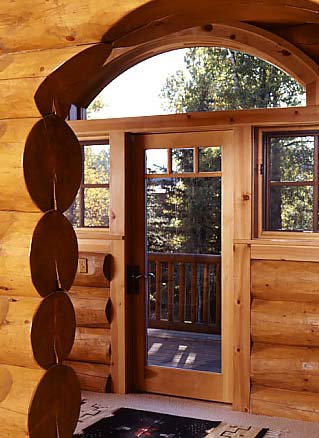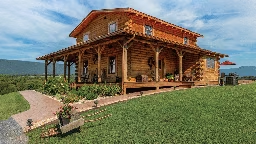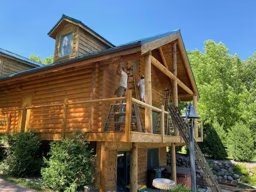How To: Stain the Interior of Your Log Home
Save money by staining the interior logs in your log cabin home. You can save thousands by staining your home’s interior logs yourself. Here’s everything you need to know for smooth, successful results.The Stain Game
 You know that staining the exterior of your log home is a job better left to the pros, but what about the inside, where potential problems like insects and rot are no longer an issue? We spoke with experts at both the Weatherall Company and Sansin Corporation, both of which backed interior-log staining as an excellent DIY project.
You know that staining the exterior of your log home is a job better left to the pros, but what about the inside, where potential problems like insects and rot are no longer an issue? We spoke with experts at both the Weatherall Company and Sansin Corporation, both of which backed interior-log staining as an excellent DIY project. “I think with adequate preparation and common sense, anybody can do it,” says Shawn Preston, a customer service coordinator with Weatherall. “Today’s products are easy to apply and require no special equipment.” What’s more, doing your own staining can literally save you thousands over a professional application, since prices for applying your own stain typically range from 20 to just over 30 cents a square foot.
The pros offered these tips:
Avoid Interior Obstacles
Sjoerd Bos, vice president of the Sansin Corporation, says staining interior logs is quite similar to staining their exterior counterparts—in other words, spraying on stain with a low-pressure or airless sprayer, then back-brushing the logs to smooth and level the finish. But working inside presents a few additional obstacles. Spraying on stain can be messy if you’re not careful, so Sjoerd recommends only spraying new (read: furniture-free) homes. Otherwise, be very thorough about protecting and sealing any areas you want to keep free from stain or, he suggests, consider just brushing on the stain instead.
Ace the Texture Test
If you have handcrafted logs, you could be in for an extra challenge when it comes to staining. But in some instances, says Sjoerd, these surfaces can actually be advantageous, as you don’t need to sand them like you might sand planed logs prior to applying stain. “If you do decide to sand an area, you’ll want to sand the entire log rather than spot-sand, as spot-sanded areas always stand out,” he says. Even if you don’t sand your logs, still need to clean them with a chemical wash (available from Sansin and other companies) prior to applying stain.
Coordinate Colors
When it comes to your home’s exterior, you might feel comfortable going with a bold or dark stain, but our experts caution against applying the same philosophy to the interior. “Our most popular colors for interior log stain are in the light brown to golden brown family,” says Shawn. “They bring warmth to a room, and they highlight the grain nicely.”
Master Moisture
Stain shouldn’t be applied until the logs have dried properly—and the amount of time it takes for logs to reach the proper moisture content for staining varies quite a bit. That’s why our experts recommend investing in a moisture meter, a device that measures the precise moisture content of wood, if you plan on doing your own staining. The moisture percentage at which most stains can be applied ranges from 18 to 24 percent, but check with your stain manufacturer for more specific details.











